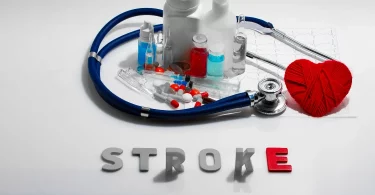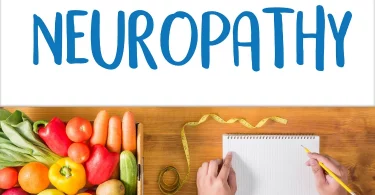
Bulimia is an eating disorder characterized by repeated bouts of binge eating followed by purging. And, finally getting rid of the food eaten by inducing vomiting.
First of all, bulimia occurs in adolescence against the background of dissatisfaction with their figure and diet. For a long time, an eating disorder is asymptomatic, but the consequences of the disease can be very serious, so parents of growing daughters (or sons) should be careful and pay attention to the following symptoms:
1. The main symptom of bulimia is self-induced vomiting
The main sign of an eating disorder is the consequences to induce vomiting. First and foremost, there are scars on the right hand’s knuckles caused by the teeth (or left, if the teenager is left-handed).
The phalanx of the index finger becomes distorted over time as a result of repeated attempts to cleanse the body of food. Scratches, ulcers, swelling, as well as damaged nails due to contact with gastric juice – all this is the main evidence that an eating disorder has already formed.
In addition, suspicion should be raised by the fact that your child, after eating, goes to the bathroom or toilet for a long time and turns on the water, then returns with a red and swollen face. If weight loss is added to these signs, then do not hesitate, the teenager needs urgent help.
The following symptoms may indicate both various eating disorders (bulimia, anorexia, compulsive overeating), and be a variant of the norm. But still, if your child has almost all of the following signs, do not delay treatment.
2. Caring for the figure and weight.
Patients with bulimia and anorexia closely monitor their weight and figure. The desire to have a beautiful, slender body is where it all begins. For a teenager’s self-esteem, weight indicators occupy almost the first place and determine his attitude towards himself. If your child looks at himself too critically, notes shortcomings and compares himself with actors, models or slimmer peers, he may develop an eating disorder. Excessive, rather fanatical, attention to the figure is accompanied by a daily measurement of weight or waist and hips.
3. Diets, restrictions or selectivity in nutrition.
Even if your kid claims to be moving to a healthy diet or merely limiting sweets, a drastic shift in the typical diet, tracking calories consumed, and changes in tastes and food preferences should raise red flags. In addition, a teenager may avoid family dinners and try to eat alone. The fact is that bulimics can’t eat in public and carefully hide their disorder. Moreover, in public places, for example, at a party, they eat in moderation, no different from the rest.
4. A teenager spends a lot of time in the bathroom or toilet.
The main symptom of bulimia is the desire to get rid of the calories by any means. Most often by artificially induced vomiting. Large doses of laxatives and diuretics can also go into the “move”. The bulimic first makes every effort to get enough, and then with the same zeal tries to immediately get rid of the food.
5. Weight fluctuations.
A direct consequence of a complex malnutrition, strict diets, breakdowns and hunger strikes. Weight changes can be significant, both positive and negative. Sometimes fluctuations can reach ten kilograms per month.
6. Increased appetite
Not only diets are a cause for concern, but also the fact that food began to disappear from the refrigerator abruptly, and the teenager eats more than usual. Bulimics can eat large amounts of food without feeling full. The eating disorder progresses quite quickly. As it develops, thoughts about food occupy more and more space in life. All other problems and priorities fade into the background.
7. Health problems
Frequent vomiting irritates the throat and esophagus, and the acid coming out of the stomach destroys the enamel of the teeth. Uncontrolled use of various laxatives can cause diarrhea or constipation. Vomiting and diuretics inevitably lead to electrolyte imbalance, and dehydration can also develop. There are menstrual irregularities and hormonal disruptions.
The clinical symptoms of bulimia can be swelling of the glands on the face and neck, constant soreness in the throat, inflammation of the esophagus, manifested by heartburn.
Other effects of bulimia are hair loss, severe weakness, muscle fatigue, dizziness, and metabolic disorders.
8. Depression and Loneliness
Gradually, a teenager fixated on food becomes withdrawn, unsociable, depressed, and sometimes aggressive. He tries to avoid events with a feast with a depression during the holidays.
Uncontrolled bouts of gluttony and the inability to limit oneself in food cause neuroses. Decreased attention and performance. Adolescents with eating disorders have low self-esteem, guilt, excessive self-criticism, and have a distorted idea of their own weight and body.
9. Enthusiasm for fitness, exercise.
An indirect sign that does not always indicate an eating disorder. A teenager can dramatically increase physical activity: run, visit a fitness club daily, dance to exhaustion, etc. Any fanaticism should alert parents.
It is worth noting that patients with bulimia outwardly look quite healthy, in contrast to anorexics with a pronounced lack of weight. In most cases, bulimics are of normal weight and often actively deny having the disorder. However, people with eating disorders rarely seek help. Bulimia is akin to drug addiction, only food is the drug. It is difficult to break out of the vicious circle on your own, you need the help of an expert specializing in the treatment of bulimia.




